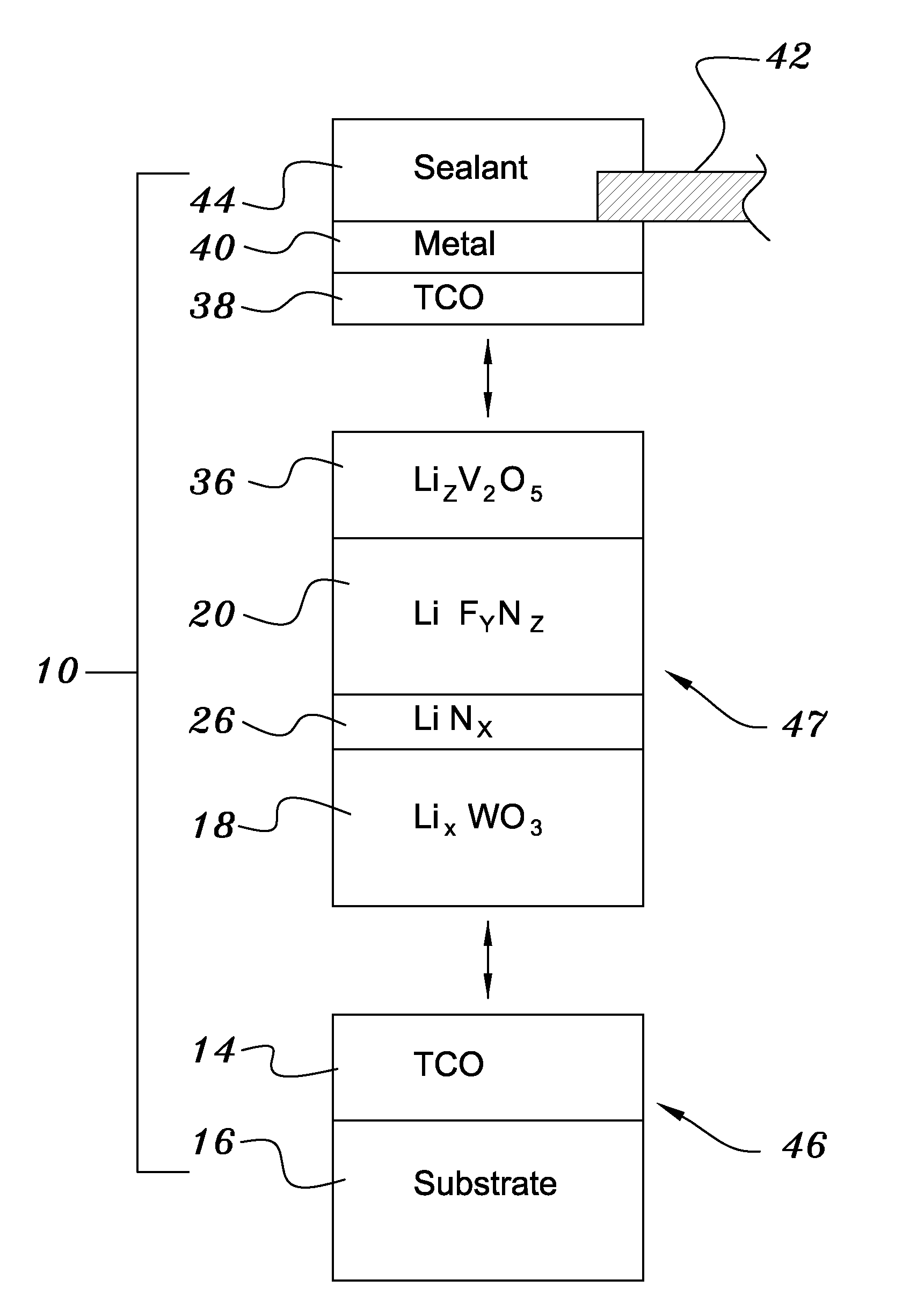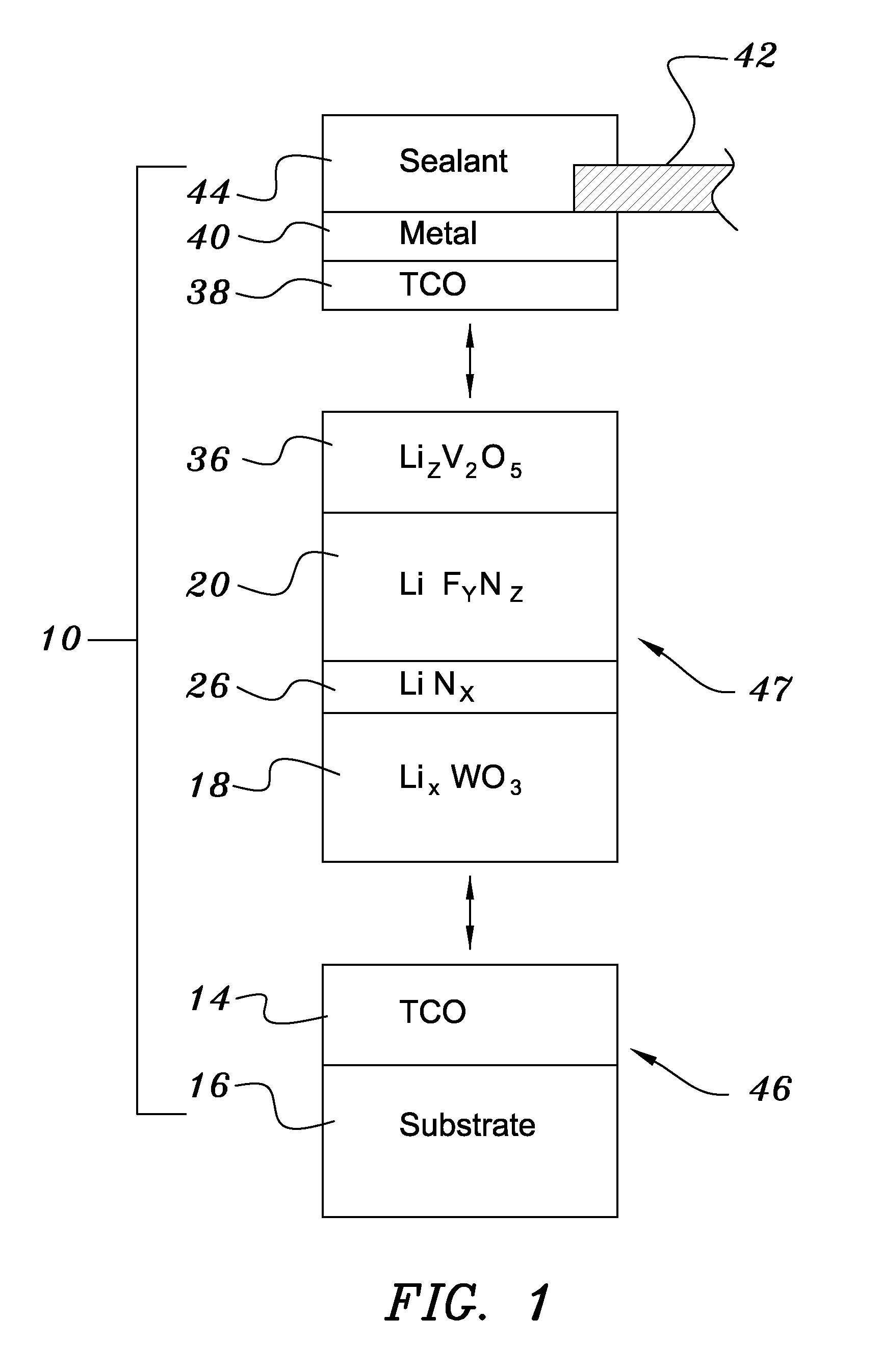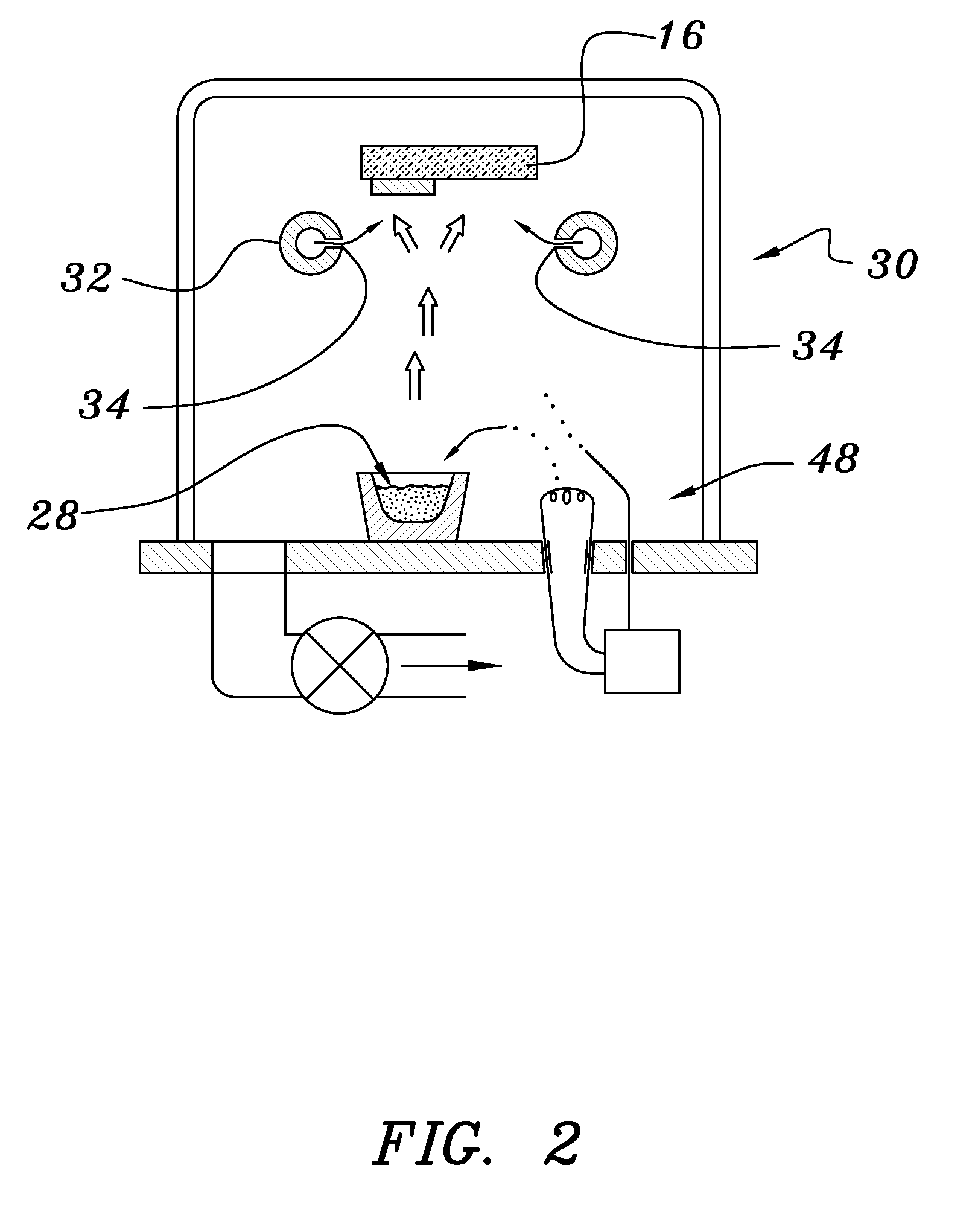Electrochromic device with self-forming ion transfer layer and lithium-fluoro-nitride electrolyte
a technology of ion transfer layer and electrolyte, which is applied in the field of multilayer structure and fabrication techniques for forming electrical devices, can solve the problems of imposing limitations on the switching speed and color uniformity, and achieve the effect of uniform coloration and limit of switching speed
- Summary
- Abstract
- Description
- Claims
- Application Information
AI Technical Summary
Benefits of technology
Problems solved by technology
Method used
Image
Examples
example 1
A Preferred Structure was Made by the Process Depicted in Overview in FIG. 3
[0038]Both glass and polyethylene terephthalate substrates 16 were cleaned with detergent and deionized water, spun dry under clean room conditions, and loaded (Step 50) into a vacuum processing chamber 30. The chamber 30 was then pumped down to a background pressure of approximately 10−5 Torr. Indium-tin-oxide was deposited from a source 28 heated by an electron beam 48 at a rate of approximately 0.2 nm / sec to yield a total thickness of 200 nm (Step 52). The vacuum system was then opened and bus bar metallization patterns were applied to the ITO layer (Step 54).
[0039]The samples were re-loaded into the vacuum chamber, which was evacuated to 10−7 Torr in a second evacuation (Step 56). About 300 nm of tungsten trioxide was deposited by e-beam evaporation at a rate of about 1 nm / sec. A ‘nitrogen shower’ was then turned on to provide ionized nitrogen at a pressure of about 5×10−5 Torr near the substrate. Lithiu...
example 2
Effect of Using Ionized Nitrogen During Lithium Loading
[0046]In two experimental runs, ECDs were made in accordance with the process spelled out in Example 1, except that ionized nitrogen was not used during lithium evaporation and loading. In one of these runs nitrogen was introduced at the same background pressure as noted above, but the ionizing field was not applied. In the other run, no nitrogen was introduced into the processing chamber. In both cases, the ECDs operated, but the switching speeds were four to five times slower than for the preferred devices.
example 3
Effect of using Ionized Nitrogen During Electrolyte Layer Formation
[0047]In two experimental runs, ECDs were made in accordance with the process spelled out in Example 1, except that ionized nitrogen was not used during lithium fluoride evaporation. In one of these runs nitrogen was introduced at the same background pressure as noted above, but the ionizing field was not applied. In the other run, no nitrogen was introduced into the processing chamber. In both cases, the ECDs operated, but the switching speeds were one hundred to one hundred fifty times slower than for the preferred devices.
PUM
| Property | Measurement | Unit |
|---|---|---|
| thickness | aaaaa | aaaaa |
| thick | aaaaa | aaaaa |
| thick | aaaaa | aaaaa |
Abstract
Description
Claims
Application Information
 Login to View More
Login to View More - R&D
- Intellectual Property
- Life Sciences
- Materials
- Tech Scout
- Unparalleled Data Quality
- Higher Quality Content
- 60% Fewer Hallucinations
Browse by: Latest US Patents, China's latest patents, Technical Efficacy Thesaurus, Application Domain, Technology Topic, Popular Technical Reports.
© 2025 PatSnap. All rights reserved.Legal|Privacy policy|Modern Slavery Act Transparency Statement|Sitemap|About US| Contact US: help@patsnap.com



